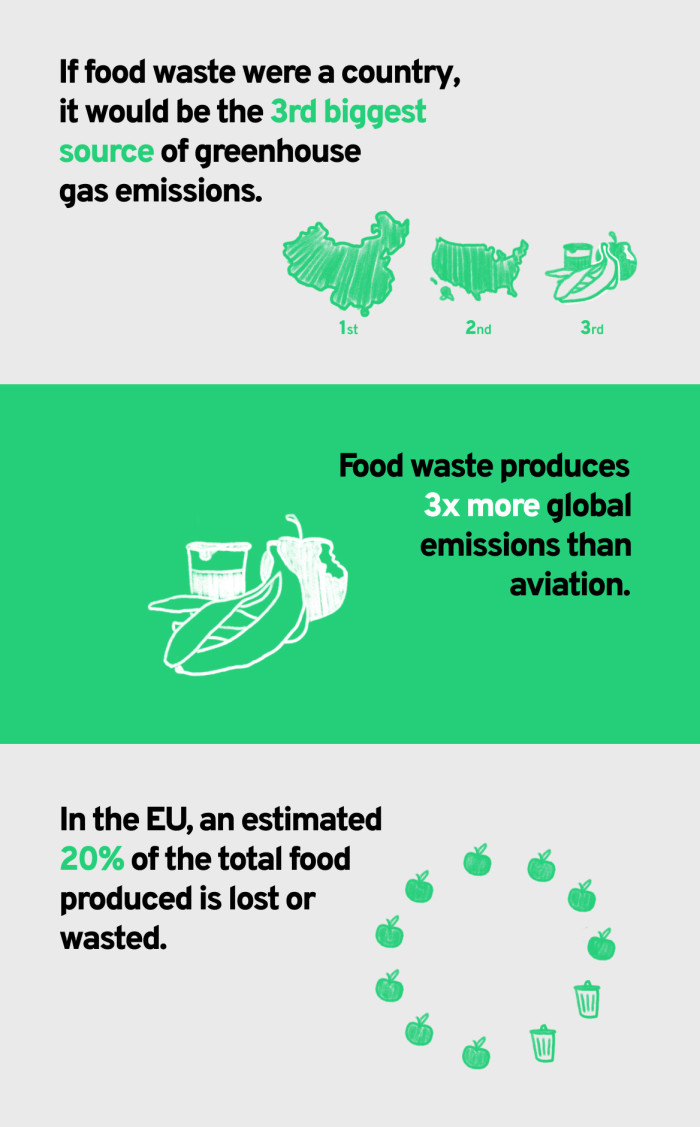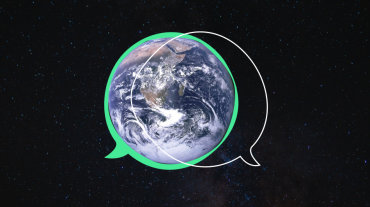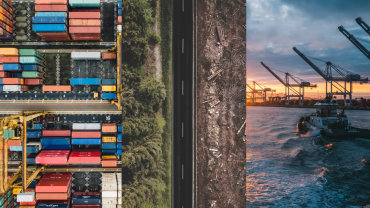How to cut food waste for the climate
When we throw food away, we add to the climate crisis. Here are a few simple tips to help out.
Globally, we waste an estimated 17% of food — even as 690 million people are hungry worldwide. All of that food requires energy to plant, grow, harvest, and transport. It goes from field to truck to distribution center to grocery store, using fossil fuels along the way. Then we buy it, and throw it away.
When that happens, not only have we wasted all the energy used so far, but then that wasted food releases methane, a super strong greenhouse gas, as it rots in our landfills. Yikes, right? The good news: we can all stop food waste, and it’s not that hard.

Eight ways you can help
✏️
Eat what you buy, and plan what you eat: Grocery lists are a great weapon against food waste! If you plan most of your meals in advance, you’ll be able to buy only what you need, and then eat it all. A tiny bit of organization can help cut food waste tremendously.
🤓
Get nerdy about food storage: Place older food in the front of your cupboard or fridge and move the new stuff to the back. Use reusable, airtight containers to keep leftovers or open packets fresh and keep bugs out.
🧊
Freeze it! The freezer is your friend when it comes to food waste. Tons of foods, from fresh veggies to leftover lasagna, are just as good after they’ve been frozen. And sustainable and reusable storage containers (think glass) and beeswax wraps can help keep the rest fresh for longer.
💚
Show some love to ugly fruits and vegetables: Your bananas have been in the fridge for a good few days and have turned brown? That just means they're nice and ripe! Use mature fruit for smoothies, juices, and desserts. Slightly mouldy broccoli? Just cut the bad part off and eat the rest.
🍲
Turn fresh into funky: There’s a reason pickles and preserves have been around for thousands of years. They’re a great way to extend the life of your fresh fruits and veggies. Another trick? Make homemade vegetable stock from the odds and ends you can’t use up. You’ll have a delicious base for your next soup and feel proud of fighting food waste.
🏷️
Understand food labelling: “best before” and “use-by” mean completely different things. Quite often, food is completely safe to eat after the “best before” date. If you're unsure, look at the food, smell it, and if it looks completely fine, taste it! On the other hand, you should be careful when your food has passed the “use-by” date (especially with animal products like meat, fish, and eggs), as that means it is no longer safe to eat.
☝️
Know yourself: Love cabbage but meh on celery? Or do you forget about everything that goes in your vegetable drawer? Take stock of what you really like to munch on and skip the rest. And store highly perishable foods in visible places — what you see is what you eat!
🗑️
Compost! This is a big one. Proper composting reduces the amount of methane food releases into the atmosphere as it decomposes. If you’re already proud of your compost pile, then kudos to you! Haven’t started one yet? Check out our composting guide to get it done right.
The big picture
Emissions from food waste are a substantial part of the climate crisis, and individual actions can be a substantial part of the solution. After all, we each have the opportunity to cut emissions from food waste three times a day.
So next time you’re at the grocery store or peeking into your fridge, consider what you can do to make sure all the food you buy becomes food you eat.



